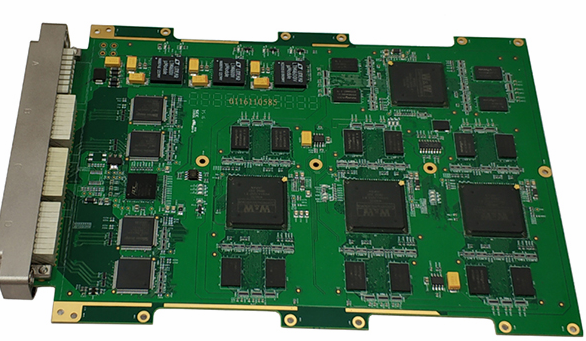If you want to make a good PCB board design, it is not only a simple design, but also these need to be paid attention to when designing.
1. If the designed circuit system contains FPGA devices, the Quartus II software must be used to verify the pin assignments before drawing the schematic. (Some special pins in FPGA cannot be used as ordinary IO).
2. The 4-layer board from top to bottom is: signal plane layer, ground, power, signal plane layer; from top to bottom, the 6-layer board is: signal plane layer, ground, signal inner electric layer, signal inner electric layer, Power and signal plane layer. For boards with 6 layers or more (the advantage is: anti-interference radiation), the internal electric layer wiring is preferred, and the plane layer is not allowed to go. It is forbidden to route the wiring from the ground or power layer (reason: the power layer will be divided, causing parasitic effects).
3. Wiring of multi-power supply system: If FPGA+DSP system is made of 6-layer board, there will be at least 3.3V+1.2V+1.8V+5V.
3.3V is generally the main power supply, and the power layer is directly laid, and it is easy to route the global power network through vias;

5V may generally be the power input, and only a small area of copper is required. And as thick as possible.
1.png
1.2V and 1.8V are the core power supply (if you use wire connection directly, you will encounter great difficulties when facing BGA devices). Try to separate 1.2V and 1.8V during PCB layout, and let 1.2V or 1.8V be connected The PCB components are arranged in a compact area and connected by copper skin, as shown in the figure:
2.png
In short, because the power supply network is spread over the entire PCB, it will be very complicated and long to go around if it is routed. The method of laying copper is a good choice!
4. The wiring between adjacent layers adopts a cross method: it can not only reduce the electromagnetic interference between parallel wires, but also facilitate the wiring.
5. What is the isolation method for analog and digital isolation? Separate the devices used for analog signals from those used for digital signals during layout, and then cut across the AD chip across the board!
The analog signal is laid with an analog ground, and the analog ground/analog power supply and the digital power supply are connected at a single point through an inductor/magnetic bead.
3.png
6. PCB design based on PCB design software can also be regarded as a software development process. Software engineering pays most attention to the idea of "iterative development" to reduce the probability of PCB errors.
(1) Check the schematic diagram, pay special attention to the power and ground of the device (power and ground are the blood of the system, and there can be no negligence);
(2) PCB package drawing (confirm whether the pins in the schematic diagram are wrong);
(3) After confirming the PCB package size one by one, add a verification label and add it to the package library of this design;
(4) Import the netlist and adjust the signal sequence in the schematic while layout (OrCAD component automatic numbering function can no longer be used after layout);
(5) Manual wiring (check the power ground network while cloth, as I said before: the power network uses the copper method, so use less wiring);
In short, the guiding ideology in PCB design is to draw back and correct the schematic diagram of the package layout while drawing (considering the correctness of signal connection and the convenience of signal routing).
7. The crystal oscillator should be as close as possible to the chip, and there should be no wiring under the crystal oscillator, and the network copper skin should be laid. Clocks used in many places are wired in a tree-shaped clock tree.
8. The arrangement of the signals on the connector has a great influence on the difficulty of wiring, so it is necessary to adjust the signals on the schematic while wiring (but do not renumber the components).
9. Design of multi-board connector:
(1) Use flat cable connection: the upper and lower interfaces are the same;
(2) Straight socket: the upper and lower interfaces are mirrored and symmetrical, as shown in the figure below:
10. Design of module connection signal:
(1) If the two modules are placed on the same side of the PCB, then the serial number of the supervisor should connect to the small and connect to the large (mirror connection signal);
(2) If two modules are placed on different sides of the PCB, then the serial number of the control system should be connected to small and large.
Doing so will place the signal to cross as in the right picture above. Of course, the above method is not a rule. I always say that everything changes as needed (this can only be understood by yourself), but in many cases, designing in this way is very useful.
11. Design of power ground loop:
The ground loop area of the power supply is large, and it is susceptible to electromagnetic interference.
Through the improvement-the power supply and the ground wire are close to the wiring, which reduces the loop area and reduces the electromagnetic interference (679/12.8, about 54 times). Therefore, the power and ground should be as close as possible to the trace! And the signal line should be avoided as much as possible to run the line to reduce the mutual inductance effect between the signals.